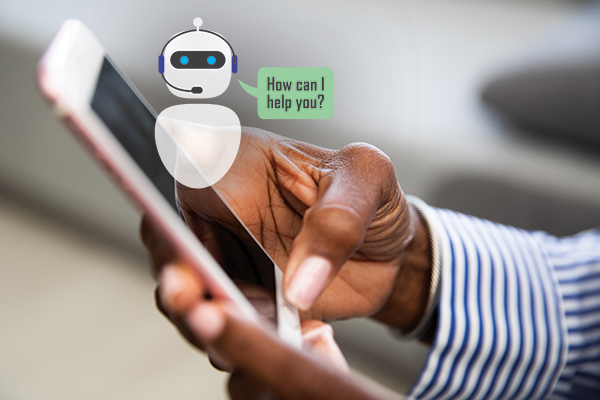CEO, DeviceBits
Chatbots Reshaping the Way Businesses Connect With Customers
[Ensure you have all the info you need in these unprecedented times. Subscribe now.]
There’s no doubt that recent circumstances surrounding COVID-19 have reshaped the way businesses operate and connect with their customers daily.
Shelter-in-place ordinances and stay-at-home mandates have forced brands to rely on artificial intelligence, machine learning and chatbot technology to manage much of the workload required for servicing their customers’ needs. Technology has played an increasingly important role, much of which will continue post-pandemic. Messaging apps, AI and self-service customer support options such as adaptive FAQs with interactive guides have allowed brands to scale down contact centers to rely more on chatbot technology and give customers the quick and reliable answers they need.
Customer Experience Fulfillment
Today’s customers have learned that brands will go above and beyond to meet their needs and provide them with excellent customer service.

Ramey
When a question needs to be answered, customers are used to troubleshooting assistance available at their fingertips. It’s convenient to call customer service to speak with an agent and receive feedback to immediate questions.
However, in the wake of recent events surrounding COVID-19, call center operations are limited, creating longer-than-usual wait times. Further, customers still expect the same level of service, creating an overload and backlog of calls with fewer agents.
In some instances, such as bill payment, health care and food service, access to customer service and answers to questions are even more critical.
It’s impossible for agents to answer all customer service calls in a timely manner, considering thousands can pour in at any given time. Because of this, call centers have needed a solution that can manage much of their workload.
Tech-Enabled Solutions
During this time, tools that allow self-service customer response techniques are more important than ever. Most popular for call centers are AI and self-discovery methodology.

Read More iTECH Stories
►Clevenger: Trade Shows Go Virtual
►Dysart: Using Technology to Keep Employees Safe
►IT Investments Aid Work From Home Shift
►Adjusting to Electronic Bills of Lading
►Chatbots Reshape B2C Relationship
AI, in the form of chatbots and other tools, is helping to bridge the gap in customer communications for businesses.
Companies are giving their customers access to branded chatbots via SMS messaging, social media messaging and live chat options. This allows customers to get their questions answered in a quick and efficient way, without the complications of sending emails or waiting on hold for a customer care agent for lengthy periods of time.
Self-Service Options
Self-service is a rapidly growing customer care trend among consumers.
Self-discovery tools such as interactive tutorials, adaptive FAQs, interactive guides and videos contain the simple, do-it-yourself answers that customers are looking for.
These tools allow the customer to solve most of their problems themselves, putting the power back into the customer’s hands. Instead of depending on a customer agent for help, a customer can use these self-support materials for productive learning.
Other tools such as interactive tutorials and videos can aid customers in their customer care journey by visually showing them how to resolve a problem.
Real-World Applications
The easiest way to implement chatbots to help alleviate pressure on call center agents is to create interactive guides with adaptive FAQs with the most common customer problems and questions included, allowing the customers to find answers themselves quickly.
These tools can help customers by providing answers to questions that others have asked and showing users step-by-step how they can reach a common goal.
With less call volume coming in to call centers, companies can contribute more vitality with the customers who need highly technical assistance for specific issues.

Photo: vitapix/Getty Images; Graphic: Transport Topics
Not only are customers relying on self-service and FAQ tutorials, but agents also can retrieve agent-assisted information from these support materials, creating a quicker and more personal experience for the customer rather than agents relying on scripts.
And in some instances, customers are quickly redirected from a chatbot to a live agent on more technical questions where a higher skill set or level of expertise is required to field questions.
In a time when temporary remote work has not allowed for many customer servicing centers to be opened, AI-driven technology and self-discoverable information can fill in the gaps and augment the work of call center agents.
Editor’s note: James Ramey is CEO of DeviceBits, a division of the Results Cos. DeviceBits provides an AI-powered platform to enable consumer self-service and agent assistance operating across all digital channels and supporting organizational digital transformation.
Want more news? Listen to today's daily briefing:
Subscribe: Apple Podcasts | Spotify | Amazon Alexa | Google Assistant | More




